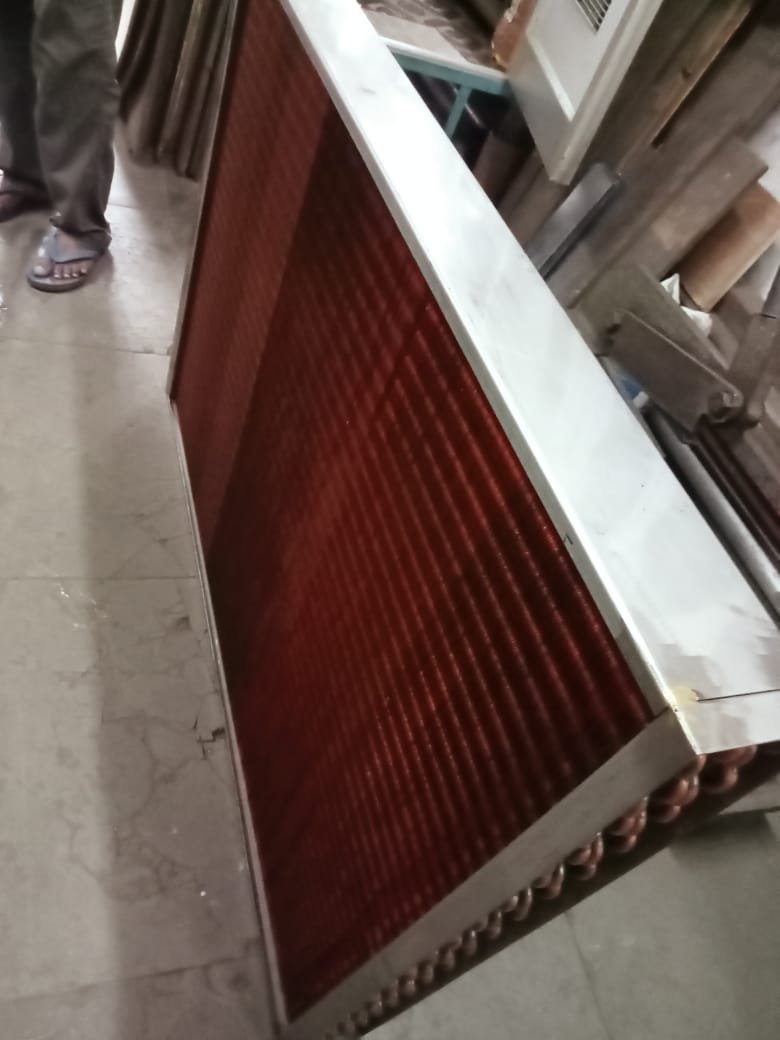
A Condenser Coil is a critical component of HVAC and refrigeration systems, facilitating the heat exchange process required for cooling or heating. It plays a key role in the condensation phase of the refrigeration cycle by transferring heat from the refrigerant to the surrounding environment.
Function of the Condenser Coil
-
Heat Dissipation: Removes heat absorbed by the refrigerant from the cooled space or medium, releasing it to the environment.
-
Phase Change: Converts the refrigerant from a high-pressure vapor to a high-pressure liquid by removing heat.
Working Principle
-
Hot Refrigerant Vapor:
-
Enters the condenser coil after being compressed by the compressor.
-
-
Heat Exchange:
-
The refrigerant flows through the coil while air (or water in water-cooled systems) passes over it.
-
Heat is transferred from the refrigerant to the surrounding medium.
-
-
Condensation:
-
As heat is released, the refrigerant changes from a gaseous state to a liquid state.
-
-
High-Pressure Liquid Output:
-
The cooled liquid refrigerant exits the coil and flows to the expansion valve for the next phase of the refrigeration cycle.
-
Materials Used
-
Copper:
-
High thermal conductivity and durability.
-
Commonly used in most traditional systems.
-
-
Aluminum:
-
Lightweight and cost-effective.
-
Often used in modern microchannel designs.
-
-
Steel:
-
Occasionally used in industrial systems for added strength.
-
Applications
-
Residential HVAC:
-
Cooling air in homes and small buildings.
-
-
Commercial HVAC:
-
Used in larger systems for offices, malls, and public spaces.
-
-
Refrigeration:
-
Critical for cold storage, supermarkets, and industrial refrigeration.
-
-
Industrial Cooling:
-
Removes heat from machinery and manufacturing processes.
-
Advantages
-
Efficient Heat Transfer:
-
Ensures optimal cooling or heating performance.
-
-
Durability:
-
Designed to withstand high pressures and temperatures.
-
-
Scalability:
-
Available in various sizes and capacities for different applications.
-
-
Energy Efficiency:
-
Modern designs like microchannel coils improve energy efficiency.
-
